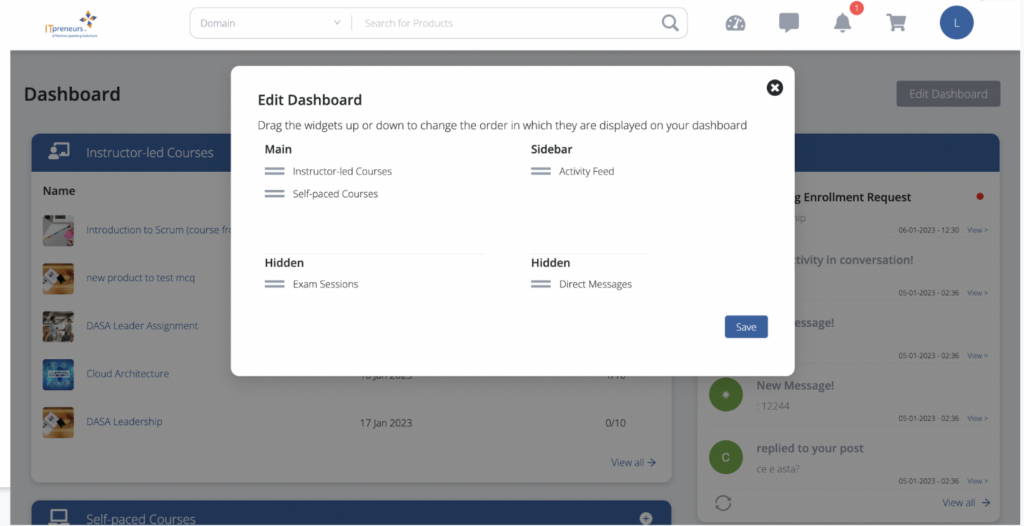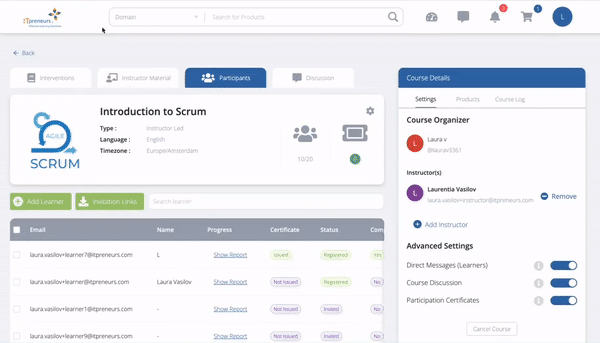As COVID-19 moves across the globe, organizations are reacting to ensure their business continuity. To prevent further spreading of the virus in some regions and to safeguard their employees, organizations are weighing if they should look into alternative ways of delivering training. Not every region is affected equally, and not every organization’s response will be the same. Regardless, it is a good idea to build resilience in your operating model.
Our strategy enables you to deliver training, no matter your delegates’ location — making sure the current situation disrupts your business as little as possible.
Leveraging Virtual Learning
Over the past 5 years, we’ve converted all major IT best-practice frameworks into Virtual Classroom, eLearning, and Blended Learning materials to ensure you have the flexibility required to deliver remote training worldwide both in the short-term and in the long-term.
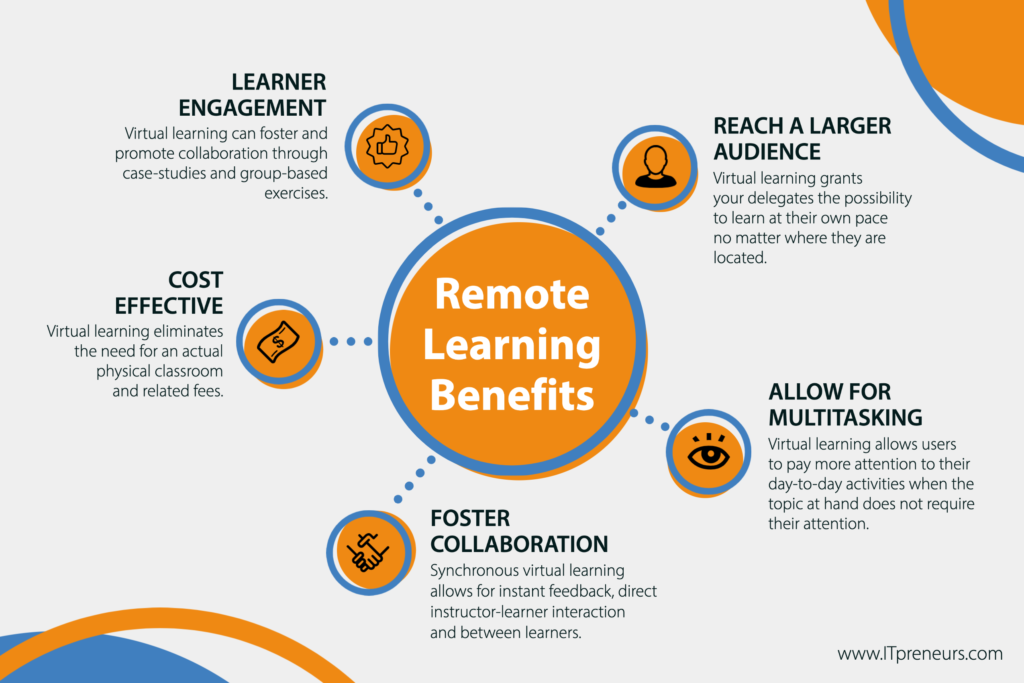
What is Virtual Learning
A reasonable question to ask then is, what is virtual learning? There are three types of virtual learning, each with their own set of benefits. We’ll explore the three options below.
Virtual Classroom
A virtual classroom is an online, real-time learning experience that brings together people from different locations to learn using live interaction. In practice, this means that most virtual classes are conducted using some form of videoconferencing software that allows for learner-instructor and learner-learner interaction. Instructors control the learning and teaching process as they do in the traditional classroom.
eLearning
eLearning is an individual learning option without instruction or interaction with other learners, which consists of self-study guides or online modules. Its distinguishing feature is that the learner can take their own time and pace while making use of the exercises and case-studies encompassed.
Blended Learning
Blended Learning refers to a learning program where more than one delivery mode is being used. This often takes shape in a combination of traditional or Virtual Classroom learning and eLearning. It is not the mixing and matching of different learning delivery modes by itself that is of significance, the focus should be on the learning and business outcomes.
Which Type of Virtual Learning Is Best for You
Depending on how you position your learner’s reality within the four spectrums below, you may find that a specific type of virtual learning suits your customers best. It is a good idea to reflect on these considerations first.
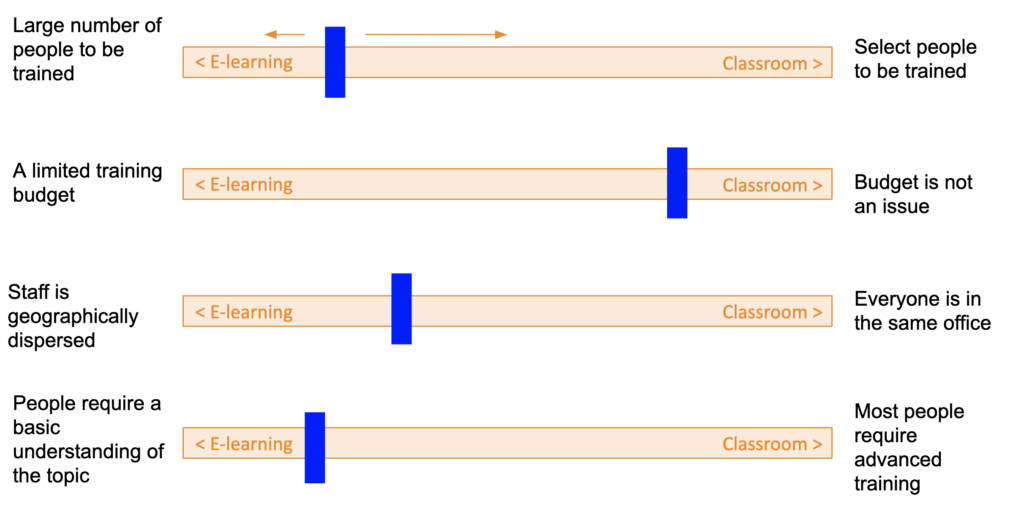
Because of the learner-centric characteristics of Virtual Learning, it allows for an additional three types of learning. You can either follow our proposed course agenda we deliver with each delivery, or mix and match to create your own learning solution.
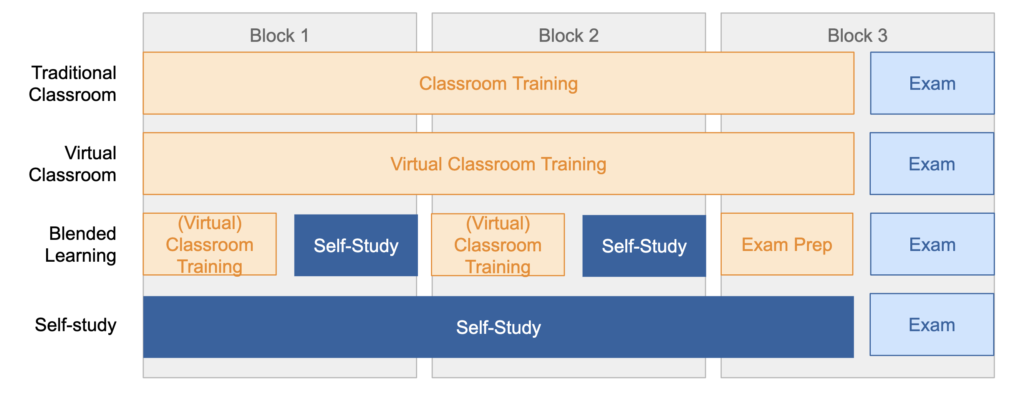
Benefits of Virtual Learning
Because a virtual classroom and the blended structure don’t rely on a physical location but do offer synchronous instruction instructions and the possibility of bundling instructor-led and self-study, it allows for a number of significant advantages over both traditional classroom and over self-study courses — providing an almost perfect middle ground.
Reaches a Larger Audience
Virtual learning grants your delegates the possibility to learn at their own pace no matter where they are located. That means you can attract learners that would otherwise not engage with you. An additional benefit of Virtual Classroom and Blended options over self-study is that it leads to learners interacting with each other during activities such as group exercises. This is an active process that has been proven to enhance learners’ knowledge of a topic.
Allows for Multitasking
Virtual learning is designed to be highly engaging and help delegates easily track their progress. It also allows users to pay more attention to their day-to-day activities when the topic at hand does not require their attention. Because of the nature of virtual learning, this can easily be done without negatively impacting the instructor and other learners.
Fosters Collaboration
A synchronous virtual classroom (as opposed to asynchronous self-study) allows for instant feedback, direct teacher-learner interaction and between learners. There is a large number of possible collaborative activities, such as discussions, group, and individual exercises, Q&A, and quizzes.
Cost-effective
Because the location of the training is a virtual one, it eliminates the need for an actual physical classroom, lunch fees, and quite possibly even transportation fees for the instructor. These savings can either lead to a higher margin or be passed on to the delegates. Likewise, it also eliminates travel and accommodation fees for the delegates. This makes the costs for both parties favorable over a physical classroom setting.
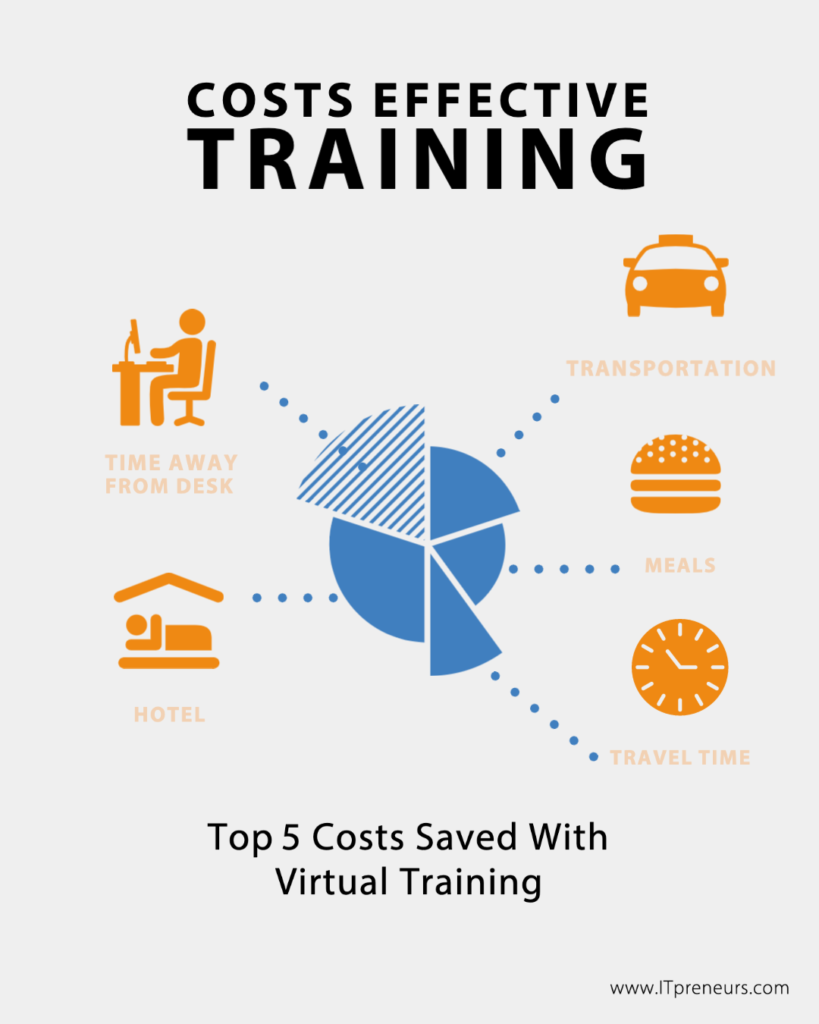
The example shows that virtual learning results in significantly lower costs over traditional classroom-based learning. You’d save your customer thousands of dollars on costs without lowering your course fee (it’s difficult for your competition to beat that!).
Differences in Teaching Virtual Training
Even though the experience offered by a virtual classroom and a blended program closely resembles an actual classroom and provides some key benefits over self-study, some key differences push for a slightly different teaching style.
Learner Engagement
Unlike a physical classroom, a virtual classroom doesn’t grant the instructor full control over the learning atmosphere. If the training then only consists of the instructor sending a message, delegates might lose interest more easily. However, his can be easily mitigated by fostering and promoting collaboration through case-studies and group-based exercises
Stable Internet Access
Should the internet connection fail in the middle of the course, that could be extremely disruptive for the delegate. Luckily, it is quite easy to catch up as the delegate still has access to the materials so they can read up on the topic at hand when it is most comfortable to them. Some virtual classroom software also allows for the recording of the session, making it easier to review the class wherever, and whenever a delegate prefers to do so.
Is Virtual Training the Holy Grail?
Virtual Classroom and Blended training offer great options for when learners need immediate feedback from either an instructor or their peers. There are, however, delegates who would definitely prefer the asynchronous learning experience that self-study offers them. This is not unreasonable as it provides a delegate the chance to go through the materials at their own speed and when it is most convenient to them. Where a virtual classroom is not restricted to a physical location, self-study is not restricted to either a physical location or time. Delegates can study where they want, how they want, and when they want.
Where self-study lacks the positive learning outcomes of one-on-one and group discussions, and virtual classrooms can be restricted by time, a combination of the two might very well be the preferred option to many learners worldwide.
We want to help you find alternative ways to deliver the best possible training. Register for our webinar-on-demand.
How to Schedule Virtual Classrooms
While this post does not aim to be the all-encompassing overview of virtual classroom training, it wouldn’t be complete without a short overview of the most popular virtual classroom tools. While there are too many tools to list, the following ones have a proven track-record and are used by industry-leaders worldwide.
Cisco Webex
Webex supports new online learning experiences, worldwide collaboration, and rich online media consumption with virtual classrooms. The setup is designed for easy use of rooms where you deliver training and education sessions and bring together groups from different sites in the process. Whether the presenter is in the room or calling in from a remote location, participants receive a good and engaging experience.
GoToWebinar
GoToWebinar seeks to make all communication frictionless. It offers live, visual video connections between multiple people in separate locations, making it possible to talk directly with those who matter most.
Zoom
Zoom provides an easy, reliable cloud platform for remote conferencing services that combines video conferencing, online meetings, chat, and mobile collaboration.
Both Webex and GoToWebinar offer a free version to help make the disruptions of the COVID-19 virus as minimal as possible.
Other alternatives:
About the author

When I’m not at work, I’m usually … working. Yeah, I’m a workaholic. But in a good way. My passion is creating new and exciting products that do not only function well but are also a pleasure for the eye. I hate ugly and rushed products. I prefer to put in a bit of extra work to make an “ok” product or experience an amazing product or experience.

